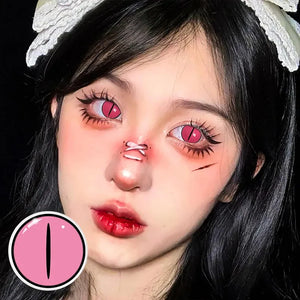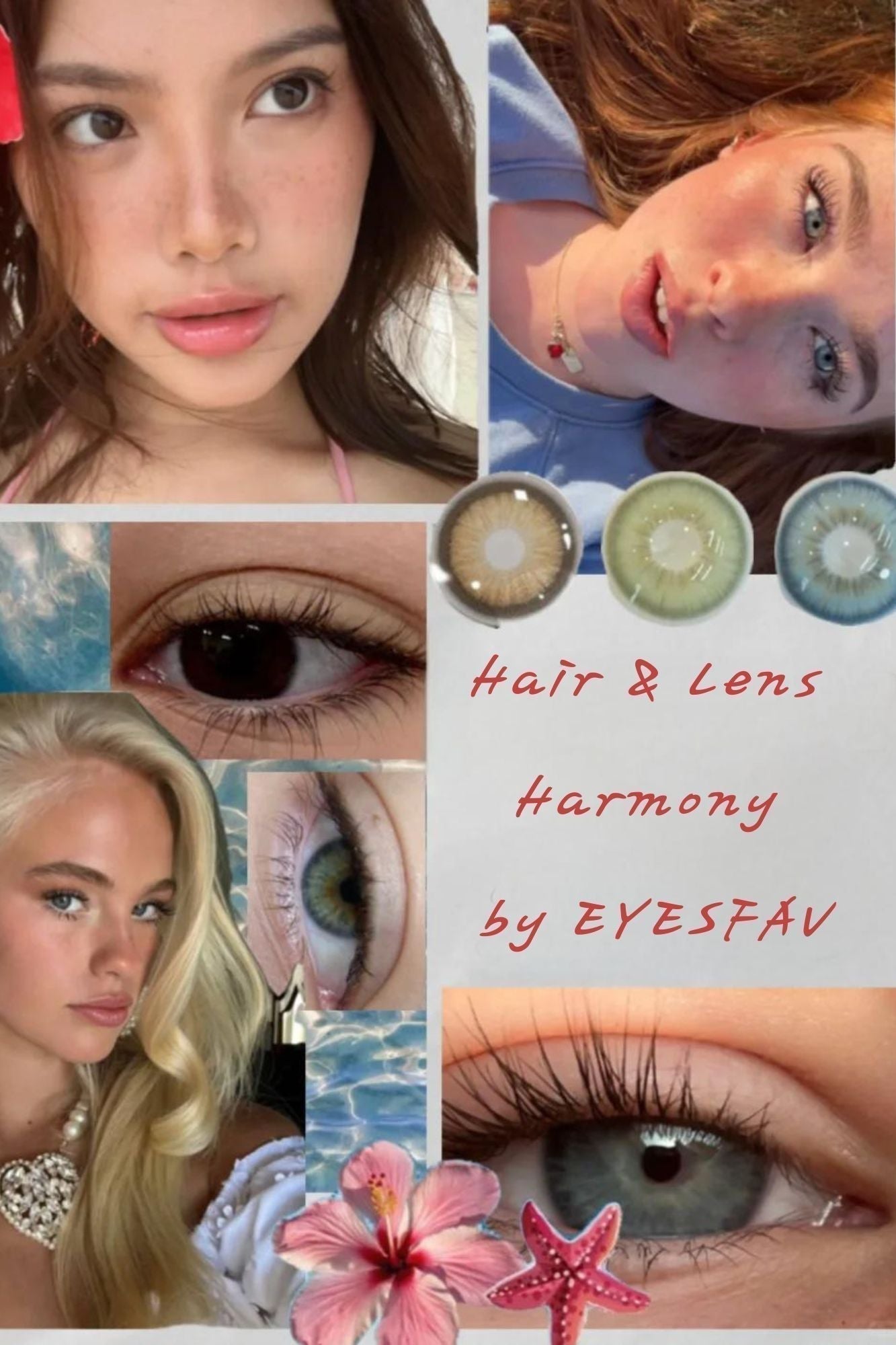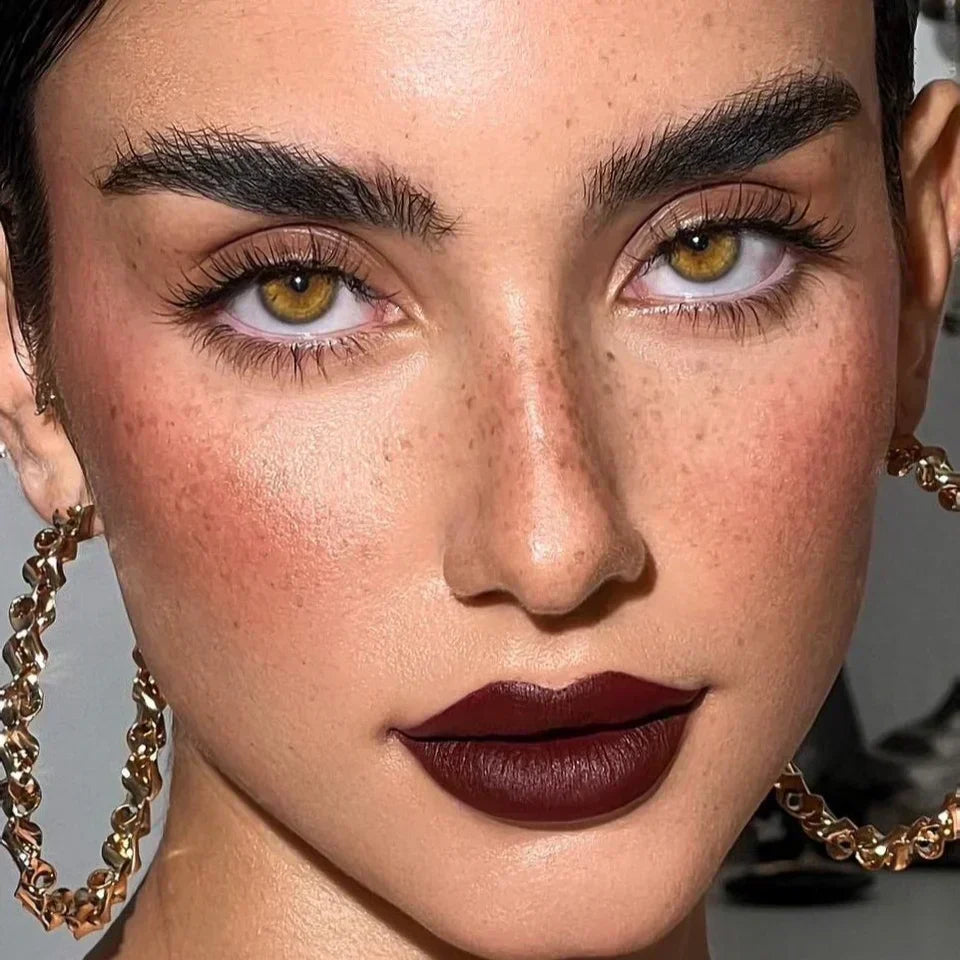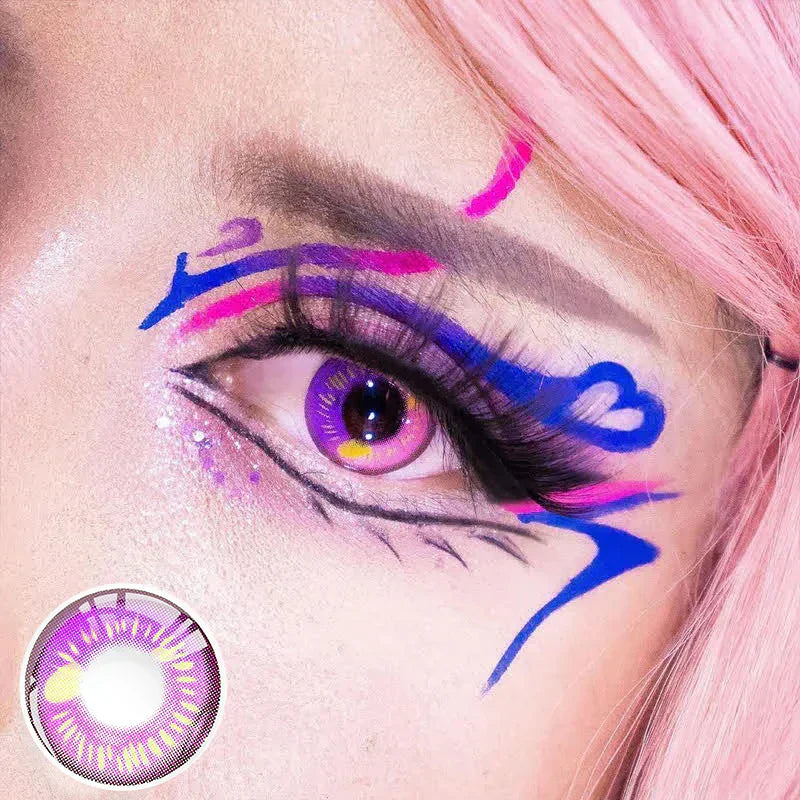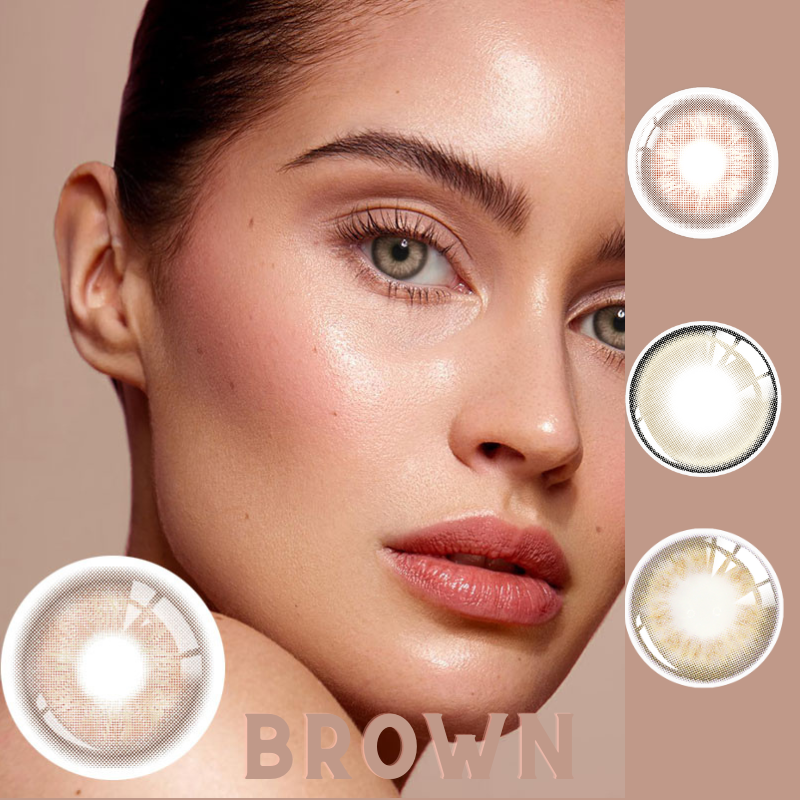جدول المحتويات:
في عالمنا الرقمي المتنامي، نقضي وقتًا أطول من أي وقت مضى أمام الشاشات، سواءً للعمل أو الترفيه أو التواصل. هذا الارتفاع في استخدام الشاشات يُبرز مشكلة جديدة: التعرض للضوء الأزرق. فبينما يُعدّ الضوء الأزرق جزءًا طبيعيًا من طيف الضوء المرئي، فإنّ المصادر الاصطناعية التي نتعرض لها يوميًا قد تُؤثّر سلبًا أو إيجابًا على أعيننا وأنماط نومنا وصحتنا العامة. لذا، فإنّ فهم هذه التأثيرات ومعرفة كيفية حمايتها أمرٌ أساسي للحفاظ على صحة العين وسلامتها.
ما هو الضوء الأزرق؟
الضوء الأزرق هو نوع من الضوء المرئي عالي الطاقة (HEV)، تتراوح أطواله الموجية بين 380 و500 نانومتر. من بين جميع ألوان الطيف المرئي، يتميز الضوء الأزرق بأقصر طول موجي، وبالتالي بأعلى طاقة. نتعرض للضوء الأزرق من مصادر طبيعية وصناعية. وأهم مصدر طبيعي هو ضوء الشمس، الذي يلعب دورًا حاسمًا في تنظيم العديد من الوظائف الحيوية. ومع ذلك، في عالمنا الحديث، تُعرّضنا المصادر الصناعية، مثل مصابيح LED ومصابيح CFL والهواتف الذكية وأجهزة الكمبيوتر وأجهزة التلفزيون، للضوء الأزرق لساعات طويلة يوميًا.

صحيحٌ أن الشمس تُصدر ضوءًا أزرق أكثر بكثير من أي جهاز إلكتروني، إلا أن المشكلة تكمن في مدة التعرض للشاشات وقربها. فقضاء ساعات أمام الحاسوب أو الهاتف الذكي أو الجهاز اللوحي يُعرّض أعيننا لضوء أزرق اصطناعي باستمرار، مما قد يُسبب مجموعةً من المشاكل.
تأثيرات الضوء الأزرق على صحة العين
1. إجهاد العين الرقمي
من أكثر الآثار المباشرة للتعرض المطول للضوء الأزرق إجهاد العين الرقمي، والذي يُشار إليه غالبًا باسم "متلازمة رؤية الكمبيوتر". تشمل أعراضه جفاف العين، والصداع، وعدم وضوح الرؤية، والشعور بعدم الراحة في الرقبة والكتفين. تحدث هذه الأعراض لأن الضوء الأزرق يتشتت بسهولة أكبر من الضوء المرئي، مما يُصعّب على العين التركيز. ونتيجةً لذلك، تضطر أعيننا إلى بذل جهد أكبر لمعالجة الضوء الأزرق، مما يؤدي إلى إجهادها.
لقد تفاقمت هذه المشكلة مع زيادة وقت استخدام الشاشات في البيئات المهنية والشخصية. يستخدم الكثيرون الآن أجهزة متعددة في آنٍ واحد أو لفترات طويلة، مما قد يؤدي إلى تفاقم إجهاد العين الرقمي. ونظرًا لأن معظم الناس يرمشون بشكل أقل أثناء استخدام الأجهزة الرقمية، فإن مشكلة جفاف العين وإرهاقها تزداد وضوحًا.
2. التأثير على شبكية العين والرؤية على المدى الطويل
يمكن أن يكون للتعرض طويل الأمد للضوء الأزرق آثارٌ أشد خطورة على صحة العين. يخترق الضوء الأزرق العين بعمق، مارًا بالقرنية والعدسة قبل أن يصل إلى الشبكية. مع مرور الوقت، يمكن أن يُلحق هذا التعرض الضرر بالخلايا الحساسة للضوء في الشبكية، مما قد يؤدي إلى مشاكل في الرؤية مثل الضمور البقعي المرتبط بالعمر (AMD). يُعد الضمور البقعي المرتبط بالعمر أحد الأسباب الرئيسية لفقدان البصر لدى كبار السن، وتشير الدراسات إلى أن التعرض التراكمي للضوء الأزرق قد يزيد من خطر الإصابة بهذه الحالة.
بالإضافة إلى ذلك، رُبط التعرض للضوء الأزرق بتطور إعتام عدسة العين، ونمو الأورام على سطح العين، بل وحتى بزيادة خطر الإصابة بأنواع معينة من سرطان العين. ورغم الحاجة إلى مزيد من البحث لفهم هذه المخاطر بشكل كامل، فمن الواضح أن تقليل التعرض غير الضروري للضوء الأزرق خطوة مهمة في حماية صحة العين على المدى الطويل.
3. زيادة عوامل الخطر
بعض الأفراد أكثر عرضة للآثار الضارة للضوء الأزرق. على سبيل المثال، يكون الأطفال أكثر عرضة للخطر لأن عيونهم لم تكتمل نموها بعد، وقدرتها على تصفية الضوء الأزرق أقل. كما أن مرضى إعتام عدسة العين، والأشخاص ذوي القزحية ذات التصبغ الخفيف، والمدخنين، ومن لديهم تاريخ عائلي من الضمور البقعي المرتبط بالعمر، هم أكثر عرضة للآثار الضارة للتعرض للضوء الأزرق. بالإضافة إلى ذلك، فإن الأشخاص الذين يقضون ساعات طويلة أمام الشاشات أو يعملون في الهواء الطلق دون حماية مناسبة للعينين هم أكثر عرضة للخطر.
كيف يؤثر الضوء الأزرق على النوم والصحة العامة
إلى جانب صحة العين، يُمكن للضوء الأزرق أن يُؤثر بشكل كبير على أنماط نومنا وصحتنا العامة. فالتعرض للضوء الأزرق، وخاصةً في المساء، يُمكن أن يُسبب اضطرابًا في الساعة البيولوجية للجسم، أي دورة النوم والاستيقاظ الطبيعية. يُثبط الضوء الأزرق إنتاج الميلاتونين، الهرمون المسؤول عن الشعور بالنعاس. فعندما نقضي وقتًا طويلًا على أجهزتنا قبل النوم، يُؤخر الضوء الأزرق المنبعث من الشاشات إفراز الميلاتونين، مما يُصعّب علينا النوم ويُقلل من جودة النوم بشكل عام.
قد يؤدي الاضطراب المزمن في الساعة البيولوجية إلى أكثر من مجرد قلة النوم. فقد رُبط بمجموعة من المشاكل الصحية، بما في ذلك داء السكري من النوع الثاني، وأمراض القلب، والسمنة، ومشاكل الإدراك. باختصار، يُعدّ الحد من التعرض للضوء الأزرق، وخاصةً في الساعات التي تسبق النوم، أمرًا ضروريًا للحفاظ على صحة جيدة.
حلول للحد من التعرض للضوء الأزرق
لحسن الحظ، هناك عدة طرق للحد من التأثير السلبي للضوء الأزرق على عينيك وصحتك العامة. باتباع بعض الاستراتيجيات البسيطة، يمكنك حماية نفسك من الآثار الضارة للضوء الأزرق مع الاستمتاع بفوائد التكنولوجيا الرقمية.
1. استراتيجيات حماية العين
عند قضاء وقتك في الهواء الطلق، من المهم حماية عينيك من الضوء الأزرق الطبيعي للشمس. ارتداء نظارات شمسية مزودة بحماية من الأشعة فوق البنفسجية وقبعة واسعة الحواف يقلل بشكل كبير من التعرض للضوء الأزرق. أما بالنسبة لمن يقضون وقتًا في الداخل، فإن العدسات الضوئية (التي تغمق عند تعرضها للضوء) والطلاءات الخاصة على النظارات تساعد في تصفية الضوء الأزرق الضار من الأجهزة الرقمية والإضاءة الداخلية.
2. مرشحات الضوء الأزرق والنظارات
تتوفر فلاتر الضوء الأزرق للهواتف الذكية والأجهزة اللوحية وشاشات الكمبيوتر، مما يساعد على تقليل كمية الضوء الأزرق التي تصل إلى عينيك. العديد من الأجهزة الآن مزودة بميزات مدمجة لتصفية الضوء الأزرق، مثل وضعي "Night Shift" أو "Blue Light Filter"، اللذين يضبطان درجة حرارة لون الشاشة لتقليل التعرض للضوء الأزرق مساءً.
نظارات حجب الضوء الأزرق أداة فعّالة أخرى، خاصةً لمن يقضون ساعات طويلة أمام الشاشات. غالبًا ما تحتوي هذه النظارات على لون أصفر لمقاومة الضوء الأزرق، مما يُساعد على تقليل إجهاد العين وتحسين جودة النوم.
3. تعديلات الشاشة والإضاءة
بالإضافة إلى استخدام فلاتر الضوء الأزرق، يُمكن لضبط سطوع وتباين شاشاتك أن يُساعد في تقليل إجهاد العين. كما يُمكن أن يُقلل إبقاء الشاشة على مسافة مُريحة من عينيك والحفاظ على وضعية جلوس جيدة من الانزعاج. اتباع قاعدة 20-20-20 - أي أخذ استراحة لمدة 20 ثانية للنظر إلى شيء على بُعد 20 قدمًا كل 20 دقيقة - يُمكن أن يمنح عينيك الراحة التي تحتاجها خلال جلسات الشاشة الطويلة.



